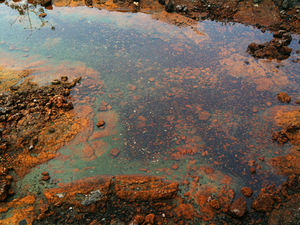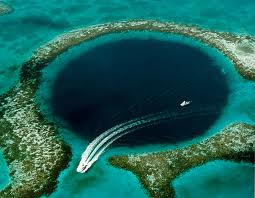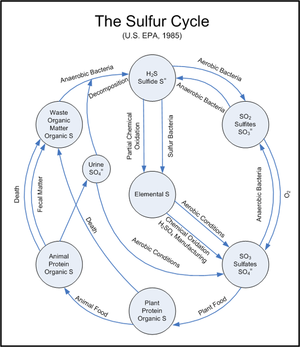Anchialine pools and cenotes: Difference between revisions
| Line 28: | Line 28: | ||
==Microbial communities== | ==Microbial communities== | ||
===[http://en.wikipedia.org/wiki/Microbial_mat Microbial Mats]=== | |||
===[[Methanogens]]=== | ===[[Methanogens]]=== | ||
| Line 37: | Line 35: | ||
===Sulfur reducing bacteria=== | ===Sulfur reducing bacteria=== | ||
==Microbial processes== | ==Microbial processes== | ||
Revision as of 02:30, 5 April 2011
Introduction
Anchialine pools, also known as Cenotes in the Yucatan Peninsula region, are subterranean bodies of water that have a connection to the surface. Anchialine pools are circular and cliffed sinkholes that contain watertable lakes. They are filled with brackish water. hThey contain large passage ways which make them desirable for cave explorations. They are very common globally, with the most popular located in the Hawaiian Islands and the Yucatan Peninsula, Mexico. They are also located in the Florida peninsula, southeastern South Australia, South Africa, Turkey on the Anatolian Plateau, and the Bahamas Banks. In the Bahamas Banks, they occur onshore and offshore, where they occur as drowned anchialine pools called Blue Holes.
Anchialine pools are home to different types of grazers. Thick and intricate microbial mats also form in these areas due to nutrients provided by hydrothermal inputs. The microbes in the microbial mats undergo anaerobic respiration. Microbial processes that occur here include: methanogenesis, sulfur reduction, and anaerobic ammonia oxidation.
Physical environment
Vegetation
There are many species that are endemic to anchialine pools including flora, fauna, and microbial communities. Characteristic heterogeneous vegetation, including tall evergreen trees like Ficus species, surrounds the opening of the pools. Removal of vegetation by large herbivores is threatening the ecosystems that reside in the anchialine pools.
Formation
Anchialine pools are formed by the dissolution of limestone by carbonic acid in karst landforms. Underlying these landforms is calcerous rock. As the rock breaks off and falls into the pool, it is further dissolved. In the Hawaiian Islands, these pools occur in highly porous substrates like recent lavas or limestone that are near the ocean.
Hydrology
Anchialine pools experience tidal fluctations and lack surface connections that are near the ocean. They contain very clear water and large channels. The anchialine pools of the Yucatan Peninsula in Mexico are the only known underground aquatic system located there. They are stratified, with brackish water on the top layer. They experience a salinity gradient throughout the water column. Salinity decreases as depth increases.
Topography
Anchialine pools are common on coastal karst plains with low topography.
Animal Community
Anchialine pools serve as the main source of water for humans and animals in regions like the Yucatan Peninsula.
Microbial communities
Microbial Mats
Methanogens
Methanogens are a type of microbe that belongs to the domain Archaea. They undergo a type of anaerobic respiration called methanogenesis.
Sulfur reducing bacteria
Microbial processes
What microbial processes define this environment? Describe microbial processes that are important in this habitat, adding sections/subsections as needed. Look at other topics in MicrobeWiki. Are some of these processes already described? Create links where relevant.
Anaerobic respiration
Anaerobic respiration occurs when microbes use other terminal electron acceptors other than oxygen. In environments, like anchialine pools and cenotes, microbes use terminal electron acceptors like sulfate (SO4-2), nitrate (NO3-), sulfur (S), and carbon dioxide (CO2). This type of respiration occurs in the absence of oxygen. Although these terminal electron acceptors produce energy, they release less energy than oxygen. Therefore, anaerobic respiration produces less energy than aerobic respiration.
Methanogenesis
Methanogenesis is the formation of methane by microbes. Methanogens, a type of Archaea, specifically carry out this process. This is a type of anaerobic respiration that uses carbon dioxide (CO2) and acetic acid as the terminal electron acceptors.
CO2 4 H2 → CH4 + 2H
CH3COOH → CH4 + 2H
Sulfate reduction
Anaerobic ammonium oxidation
Current Research
"A Comparative Molecular analysis of Water-filled Limestone Sinkholes in North-eastern Mexico"
References
Edited by Lauren Behnke, a student of Angela Kent at the University of Illinois at Urbana-Champaign.





